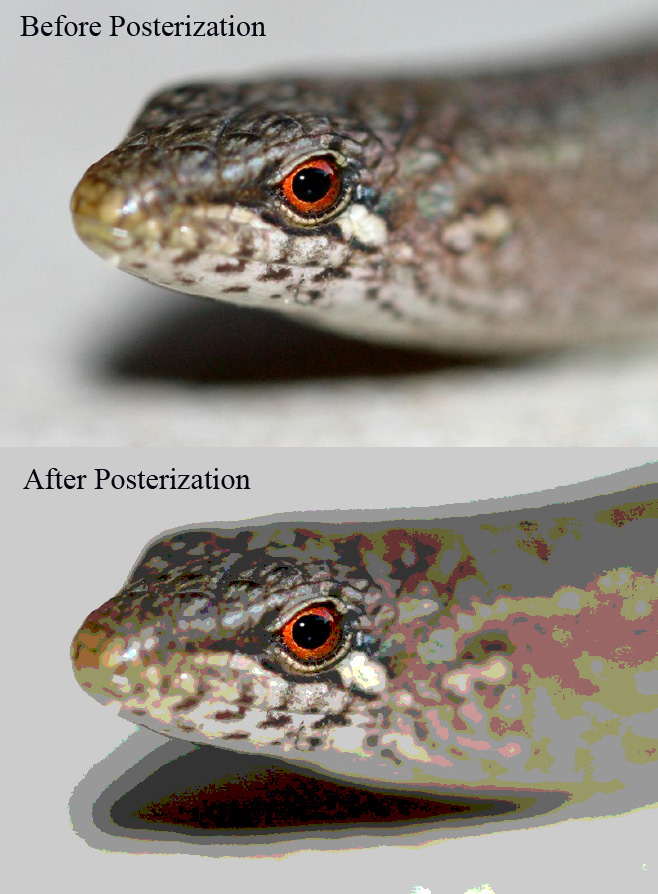OK, so it's fixed! HDR was it, huh? No problem about the help. I've actually been recovering from surgery for a week now and had extra time to help on the forums! All your displays should support 10-bit, but we'll get to that later. Before we dive in, it is a lot easier to just leave it at default RGB settings! Ok, here it goes!
Yeah, sRGB is I think a bit more specific term, but the RGB setting you see there in nVidia is basically it. Your LG monitor's product page mentions the sRGB spec. So, with 8 bit color you will get some banding (actually like the posterization pics above). This affects gradients or color transitions because lower bit depths don't allow enough "baby steps" in between the transition from one color to another due to reduced color palette (IE: 8 bit color gives 16.7 million total colors, vs 10 bit's total 1 billion colors). If you're seeing posterization all the time, it could be the lower bit depth setting in Windows. But, I would say that it also depends on the video source. It could either be dynamic bitrate adjustment (downward) due to poor connection (when streaming) as I mentioned earlier, or it could be how the video was encoded and it will always look like that. Same can be said for static images - the banding could be inherent in the picture data.
You should try downloading some 4k videos here so you can take the streaming out of the equation:
http://thedigitaltheater.com/captain-marvel-2019/ If that still looks bad then it's your hardware or settings.
Before you mess with color settings, check the current state of your monitors so you can compare again afterwards. I've used
http://www.lagom.nl/lcd-test/ for a long time now to check my displays. Start at the beginning with the Contrast pic, follow the instructions, and continue to each page until you're done. Best you can do without a calibration device. There are really only a few that I use there, in this order specifically because earlier settings affect later ones: Contrast, Gamma, Black, White, Gradient. Probably a good idea to read through them all at least once if you want to know more, but I don't think it's absolutely necessary to use them all. One thing to note, I don't use the browser to view those images. I've downloaded them to my pc (just right click on them) because you must view them in actual size, pixel for pixel, without scaling. Windows and the browsers tend to want to scale everything, so it's not the true image size. Also, each display should be set to a video resolution equal to it's native resolution. Open the files in Windows Photo viewer, but go to the options in upper right (...) and select View Actual Size (especially important for the Gamma and Gradient images).
As shown in your pic above, the bpc setting is locked at 8 while in RGB mode. All 3 of your displays should support 10 bit color, although they use FRC, which is a whole other tangent! The TV most likely will support 10-bit, but you may have to set the TV to PC mode. To get 10 bit color, you have to use the YCbCr color settings. If you're not using HDR (your Acer or LG), try 4:4:4 first (that's full color information). This might open up the bpc setting so you can change it to 10. If it didn't unlock bpc, you'll have to go to 4:2:2. That's a bit of a compromise due to Chroma Subsampling which actually discards some color data to save bandwidth, but the difference should be hardly noticeable from 4:4:4. This should be very useful to you as far as the TV goes:
https://www.rtings.com/tv/reviews/samsung/nu6900#comparison_2485
I should say, the reason that all these settings can hit their limits is due to bandwidth limitations of the video connections to the monitors. Every increase in a setting will increase data usage and eat up bandwidth. The two that majorly affect bandwidth are resolution and refresh rate. So, with settings like 4k/60Hz/HDR/10bit you max out the bandwidth of HDMI 2.0b and you have to use chroma subsampling to save some bandwidth. Not sure how your ultrawide is going to fit in with all this, so you'll have to experiment. See the tables in the wikis for HDMI and Displayport:
https://en.wikipedia.org/wiki/HDMI#Refresh_frequency_limits_for_standard_video
https://en.wikipedia.org/wiki/HDMI#Refresh_frequency_limits_for_HDR10_video
https://en.wikipedia.org/wiki/DisplayPort#Refresh_frequency_limits_for_standard_video
https://en.wikipedia.org/wiki/DisplayPort#Refresh_frequency_limits_for_HDR_video
Your detailed display specs:
https://www.displayspecifications.com/en/model/31826fe
https://www.displayspecifications.com/en/model/222b645
https://www.displayspecifications.com/en/model/7c9a13b0



